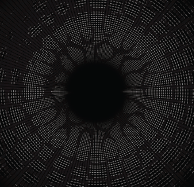A BLACK HOLE
There are basic principles of physics that influence our lives, and the laws of gravity are part of these scientific principles. The pull of the Earth’s gravity keeps your feet on the ground and pulls the apple towards the ground when it falls from the tree. Astronauts in space can float freely inside the International Space Station. Because they are so far from Earth they have escaped the pull of Earth’s gravity on their bodies. The Moon’s gravitational pull on the Earth creates ocean tides. The Sun’s gravitational pull keeps the planets in our solar system revolving in their orbits around the Sun. This tells you that gravity exists in the universe and not just on Earth.
In fact, launch rockets must escape the pull of Earth’s gravity in order to send probes into space like both voyagers that explored Jupiter and other planets. The speed rockets need to reach in order to overcome Earth’s gravity and travel into space is called ‘escape velocity’. Physicists have mathematical equations that calculate the escape velocity of lots of bodies in space, like planets and stars. The gravitational pull and escape velocity of a body in space depends on its mass. Mass is how scientists measure the amount of matter in something. The more mass a body in space has, the greater its gravitational force is.
The Sun has enough mass to control a large, distant planet like Jupiter. The Sun is a star and all stars progress through a life cycle. Stars which are 1.5 to 3 times larger than the Sun are called giant stars. It’s easy to conclude that giant stars have a greater gravitational pull than our Sun because they have a greater mass. When a giant star dies at the end of its life cycle, only the core (solid center) of the star is left. If this core collapses into itself, nothing visible is left.
What happened to the mass of the star? The matter in the star’s core had to go somewhere and physicists define this missing matter as a black hole. A black hole has so much matter concentrated in a place that is so small that it is invisible to even powerful telescopes. All that concentrated mass still exerts a gravitational pull on anything that gets near it. That pull of gravity is so strong that once something “falls” into a black hole, it can never create enough escape velocity to get out. Even light, the thing in the universe that travels the fastest, cannot escape from a black hole.

